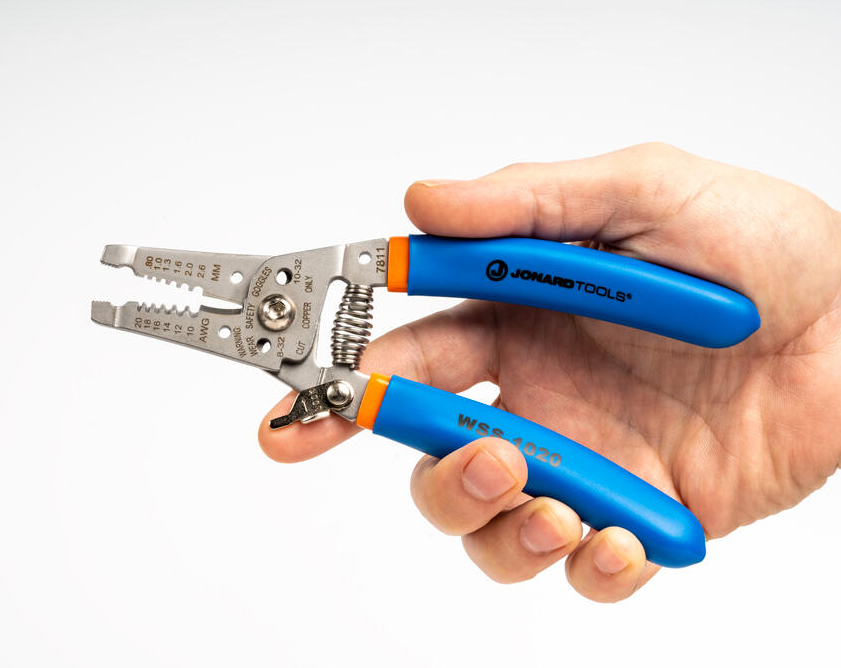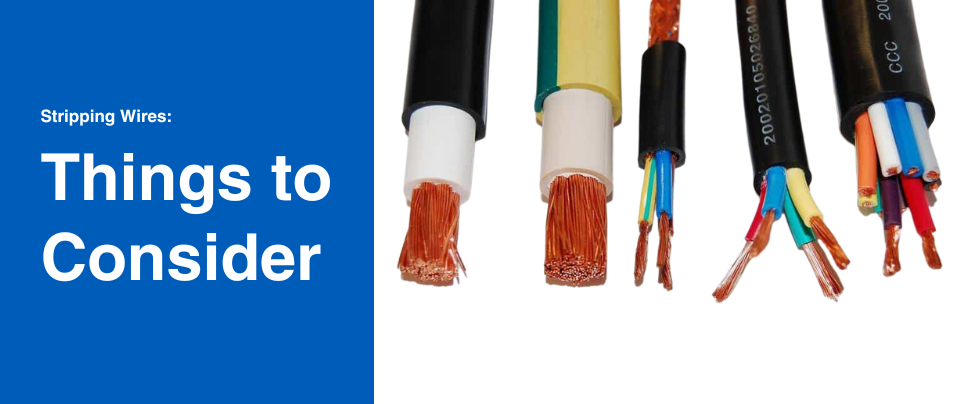Stripping Wires: Things to Consider
Learning how to strip a wire is an essential skill for performing basic tasks. Whether you want to install a light fixture, repair a device, make electrical connections, or just troubleshoot electrical problems, knowing how to do it properly and efficiently will save you plenty of time and money. For this reason, we are happy to share some of the most important things to look out for when stripping wires, as well as highlighting one of our favorite tools for the job!
Things to Consider
- Type of wire: Identifying the type of wire you are stripping is important because it will affect what method you use when stripping. There are two main types of wires: solid core and stranded core. Solid core wires are made of a single, solid strand of copper. These are typically used for heavier-duty applications such as in house wiring, or in appliances that require a lot of current. On the other hand, standard core wires are made of multiple strands of copper twisted together. They are more flexible and are often used for applications that require more flexibility. Identifying which wire you’re working with will help you pick the right tool for the job.
- Gauge of wire: The gauge of the wire refers to its thickness, and also plays a role in helping you choose what tool to use. The lower the gauge number, the thicker the wire, and thus the more current it can carry. American Wire Gauge (AWG) standards range from 0000 to 40, but most household and commercial wiring demands range from 2 to 14. Typically, large gauge wires require the use a wire stripper with a large jaw, and the opposite for small gauge wires.
- Insulation of wire: The insulation of a wire is a material (typically made of plastic or rubber) that covers the wire and protects it from damage, electrical shock, and short-circuiting. There are two main types of wire insulation: thermoplastic and thermoset. Thermoplastic insulation is the most common type. It is made of compounds that separate when heat is applied, allowing insulation to be reheated and reshaped. Thermoset insulation, on the other hand, is made of a material that gains strength when heated, and thus cannot be melted or re-shaped. The insulation on a wire is typically colored to indicate the gauge of the wire. For example, a 14 AWG wire will often have a white insulation. The insulation on a wire is also marked with the wire's voltage rating, which indicates the maximum voltage that the wire can safely carry. When stripping the insulation, you need to strip just enough to expose the copper conductor, but not so much that you damage the conductor.
Best Wire Stripper for the Job
THE WSS-1020

The WSS-1020 from Jonard Tools is our pick as the perfect tool for the job! Made of a 50 HRC stainless steel construction, the WSS-1020 provides stellar precision when stripping solid and multistranded wires ranging from 10-20 AWG. Built with an ergonomic curved handle and a coil spring, this tool minimizes hand fatigue by providing optimal comfort during usage. Additionally, this wire-cutter provides enormous versatility that features a bolt cutter, a built-in wire looper that makes it easy to loop the wire for termination, and a lock that keeps it closed when it’s not in use. Not only does this tool offer the most efficient means for stripping wires, but it’s also heat tested for long-life durability! For more information about the WSS-1020, check out our Stainless Steel Curved Wire Stripper Product Video!
Safety Precautions
Lastly, when stripping a wire, it’s always important to follow safety procedures. Most notably, it is absolutely necessary to make sure the power is off before you start stripping the wires. This is the most important safety precaution to take, as it will prevent you from being electrocuted (which I’m sure none of us want!). Additionally, wearing safety glasses and gloves is highly recommended since it can decrease the likelihood of experiencing accidents. Safety glasses will protect your eyes from flying debris, while gloves will protect your hands from cuts and electrical shock. Working in a well-lit area is also important, as it will allow you to clearly see what you're doing. This will help you avoid mistakes while also providing the means to identify potential hazards. Lastly, always remember to take your time and be as diligent as possible when stripping wires. It’s better to work slower and more methodically than to rush yourself, since it will help you avoid making critical mistakes.
About Jonard Tools:
Founded in 1958, Jonard Tools® manufactures tools for the Telecom, CATV, Fiber Optic, Home Automation, Security & Alarm, and Electrical markets. Jonard Tools designs and engineers patented products by utilizing customer partnerships to create innovative solutions for industry needs. New tools are released each month and are all Made For Life® and Guaranteed For Life. Through quality and innovation Jonard aims to move the industry forward and connect the world.

Comments
Login or Register to post comments.